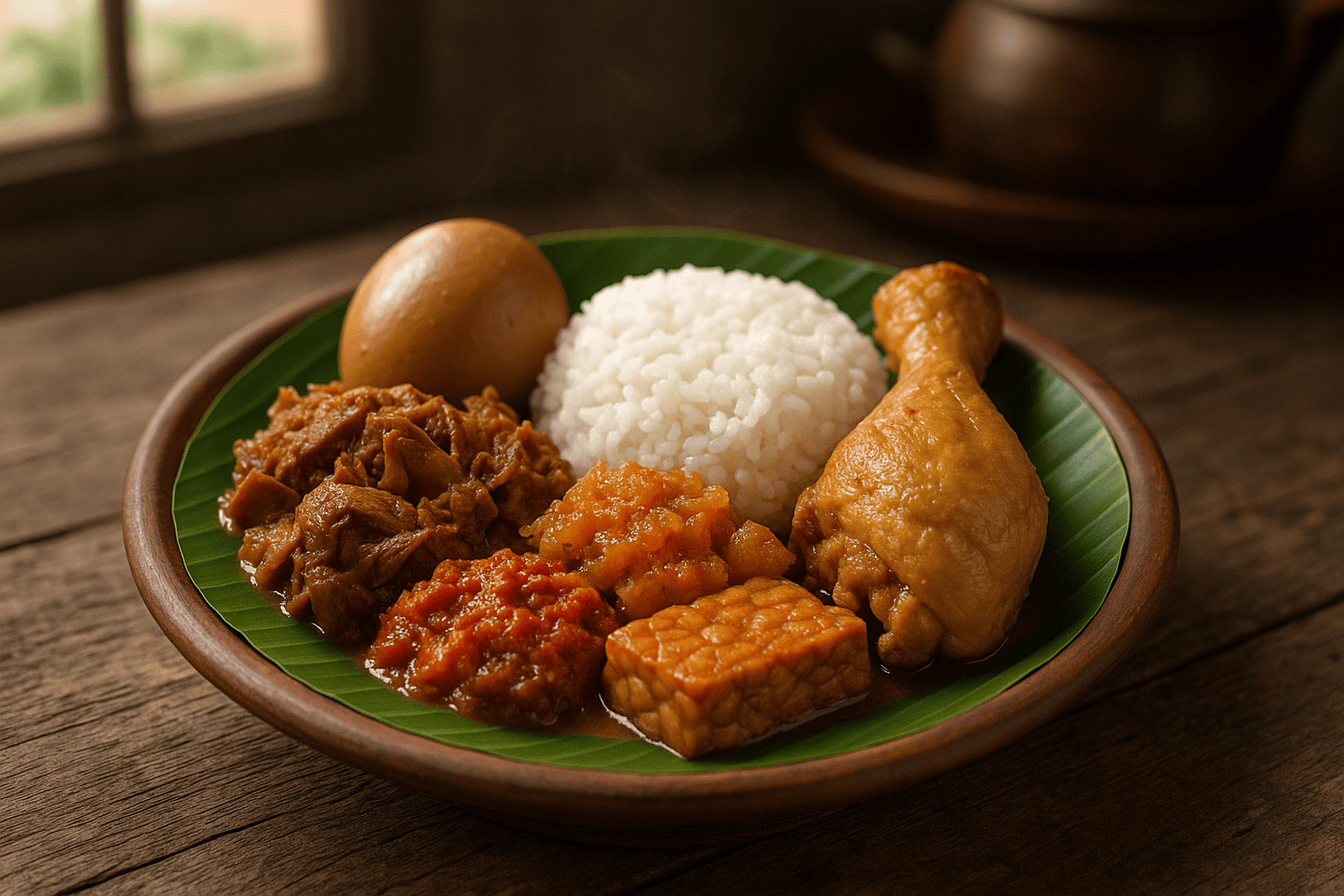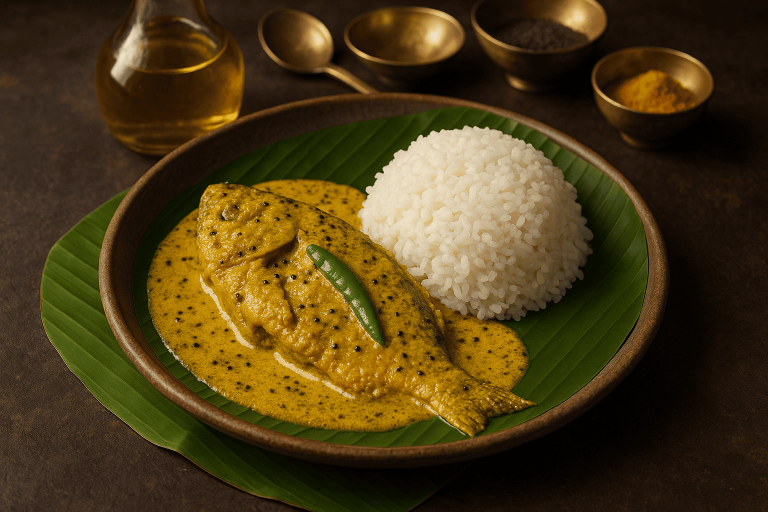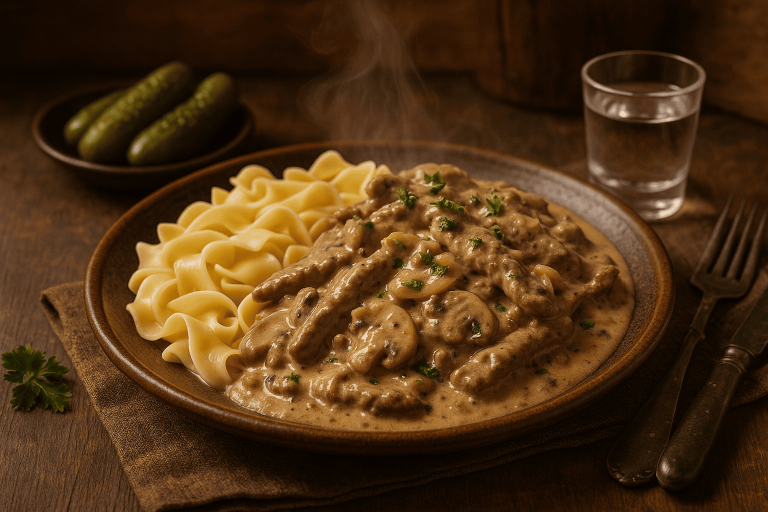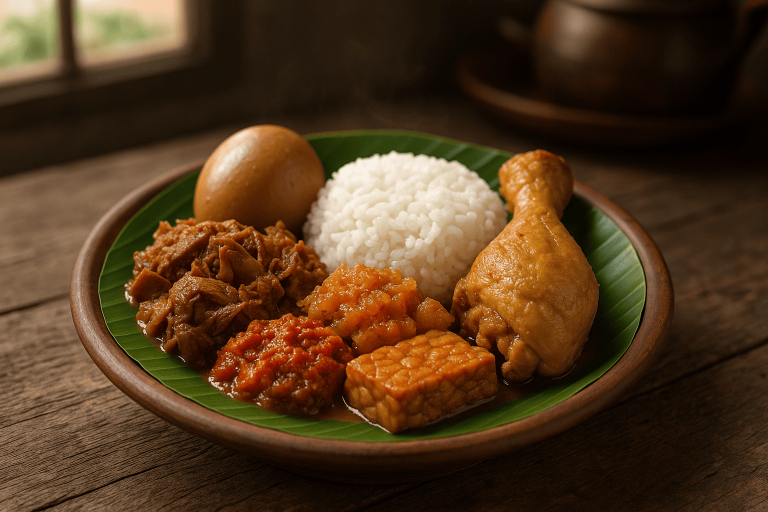
When it comes to traditional Indonesian cuisine, few dishes tell a story as beautifully as Gudeg. Originating from Yogyakarta — the cultural heart of Java — Gudeg isn’t just a local favorite. It’s a deeply rooted tradition, an embodiment of patience, and a symbol of Javanese identity.
With its caramel tones, richly aromatic spices, and melt-in-the-mouth jackfruit, Gudeg is the kind of dish that bridges generations, families, and cultures.
📜 A Culinary History Steeped in Sweetness
Gudeg finds its origins in the royal kitchens of Yogyakarta and Surakarta (Solo), during the time of the Mataram Sultanate. The need to preserve food and make use of the abundant young jackfruit (nangka) growing across Java gave rise to this slow-cooked masterpiece.
The word “Gudeg” is believed to come from the Javanese word “hangudeg”, which means to stir — a nod to the constant slow stirring required during the long cooking process.
In the centuries that followed, Gudeg transformed from royal fare to a beloved dish found in every layer of Javanese society. Today, it’s served everywhere — from roadside warungs to elite family-run restaurants, from lunchboxes to palace banquets.
🍃 What Is Gudeg Made Of?
At its heart, Gudeg is a slow-cooked jackfruit stew, sweetened with palm sugar and mellowed with creamy coconut milk. But it’s more than just one dish — it’s a full experience.
🔸 Core Ingredients:
- Young jackfruit (nangka muda) – the star ingredient
- Palm sugar – gives the dish its iconic sweetness and color
- Coconut milk (santan) – adds depth and richness
- Shallots, garlic, bay leaves, galangal, coriander – for aroma and spice
- Teak leaves (optional) – traditionally used for their red coloring and subtle bitterness
- bitterness
🍽️ The Gudeg Platter Experience
A traditional Gudeg meal isn’t complete without a variety of accompaniments, each offering a contrasting flavor and texture to balance the stew’s mellow sweetness.
🌟 Typically served with:
- Krecek – spicy stew made from cow skin (or sometimes beef or tofu), adds heat and chewiness
- Opor Ayam – tender chicken in creamy coconut milk, balances the sweetness
- Boiled egg (telur pindang) – cooked in the same spice mixture as Gudeg
- Tempeh or tofu – fried or stewed for extra protein
- Sambal goreng – fiery chili sauce that cuts through the sweetness
- Steamed rice – to complete the meal
This combination turns a single dish into a symphony of flavors — sweet, savory, spicy, and umami, all on one plate.
🕰️ A Dish That Honors Time
What makes Gudeg so special is the time it takes to prepare it. Traditionally, it’s cooked slowly for 8–12 hours, allowing the jackfruit to soften completely and absorb every bit of flavor.
The slow cooking transforms the jackfruit into a rich, jam-like texture, often mistaken for caramelized meat. It’s a perfect example of “slow food” — a counter to fast-food culture, where flavor is earned, not rushed.
Even the accompanying eggs and chicken are simmered in the same broth, absorbing layer upon layer of spiced coconut richness.
🌍 Regional Variants of Gudeg
There are several styles of Gudeg across Java, each with its own twist:
1. Gudeg Yogyakarta (Gudeg Basah)
This is the most common version — soft and moist, with plenty of coconut milk gravy. It’s sweet and mild in flavor.
2. Gudeg Solo (Gudeg Kering)
This “dry” version uses less coconut milk, resulting in a thicker, caramelized texture. It has a stronger aroma and often more robust seasoning.
3. Gudeg Mercon
“Mercon” means “firecracker.” This spicy modern version adds chili to the traditionally sweet dish for heat lovers.
🏙️ Where to Eat Gudeg in Yogyakarta
If you’re traveling to Yogyakarta, you must try Gudeg at its source. Some iconic places include:
- Gudeg Yu Djum – the gold standard of Gudeg, in business since 1951
- Gudeg Pawon – served straight from the kitchen hearth at midnight
- Gudeg Bu Lies – known for delicious dry-style Gudeg
Every household and vendor has their own closely guarded recipe, adding their own unique balance of spices and sweetness.
📝 Final Thoughts
Gudeg is more than a dish — it’s a culinary poem. It speaks to the patience, warmth, and richness of Javanese culture. From the way it’s prepared to how it’s served — thoughtfully, with care — Gudeg invites us to slow down, savor each bite, and appreciate the layers of flavor and history in our food.
Whether you’re a culinary traveler, a home chef, or simply curious about Indonesian cuisine, Gudeg offers a soulful journey through one of the world’s richest food cultures.



